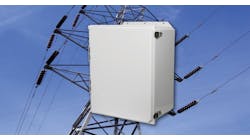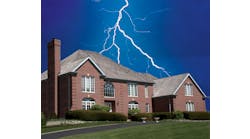Electrical equipment has always been susceptible to overvoltages caused by lightning strikes. As facilities start to add an increasing number of sensitive electronic devices, the potential for harmful impacts are much greater than before.
A well-designed facility grounding system effectively provides a path for fault current to return to the source of power and activate a current operating protection device (e.g., a circuit breaker). Another aspect of a well-designed and maintained grounding and bonding system is improved levels of power quality. The grounding system helps support an equipotential bond among the sensitive electronic equipment during a transient overvoltage event, such as a lightning strike.
Power quality mitigation is recommended to be applied in layers. The first layer of mitigation for transient overvoltage is the facility’s grounding system, which will bear the brunt of a lightning strike and the overvoltage associated with it.
The next layer of defense is an adequately sized surge protector that can dissipate the residual energy created by the lightning strike. Grounding systems have limitations and may not effectively dissipate all the energy. This remaining energy is dissipated by the electronics filtering stage in the surge protector. However, this stage should only be exposed to a small transient, as most of the energy has been dissipated by the previous protective layers.



